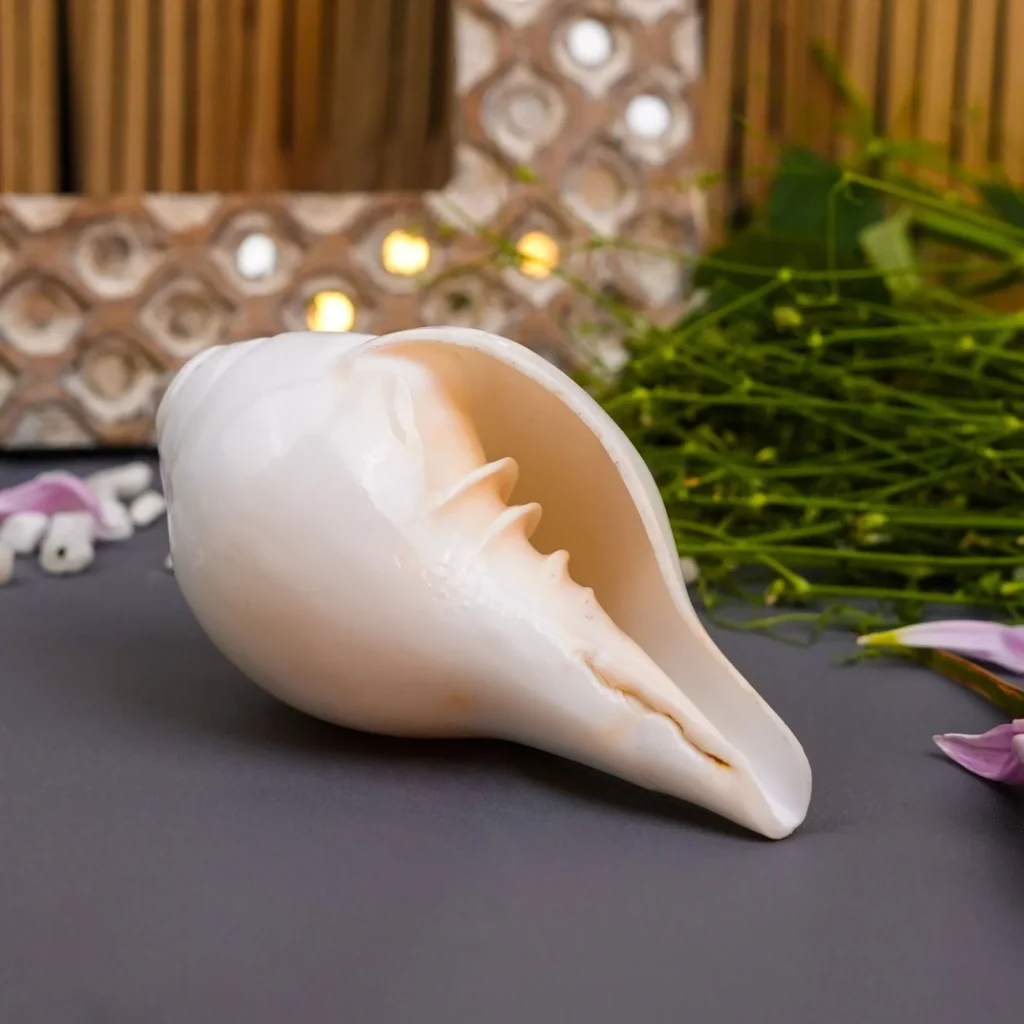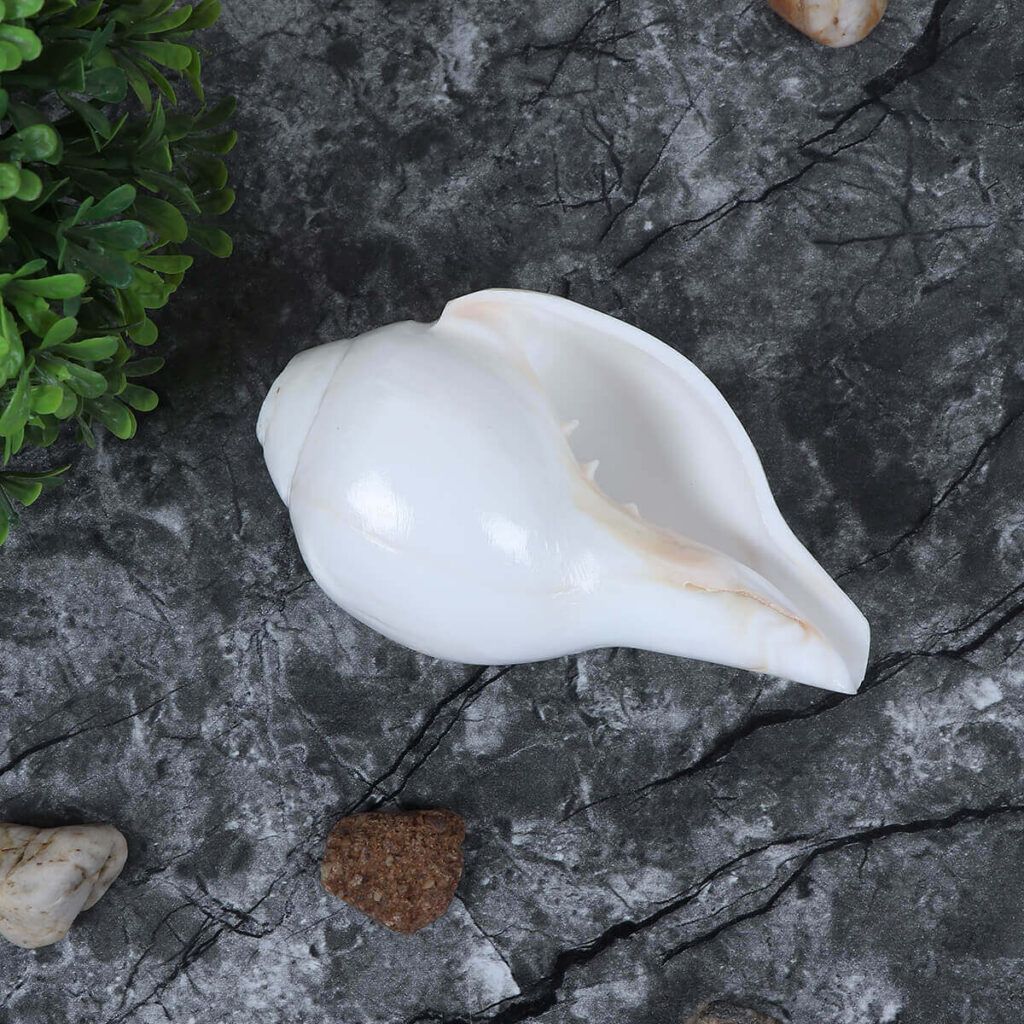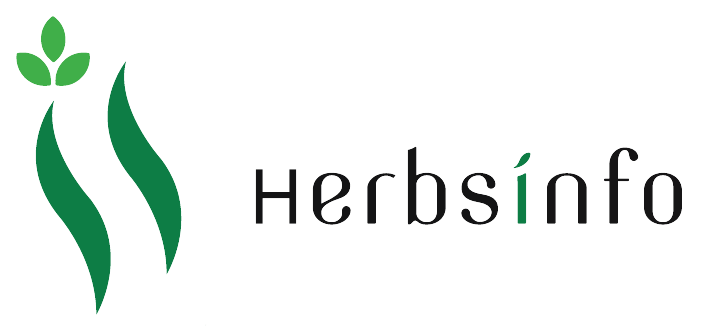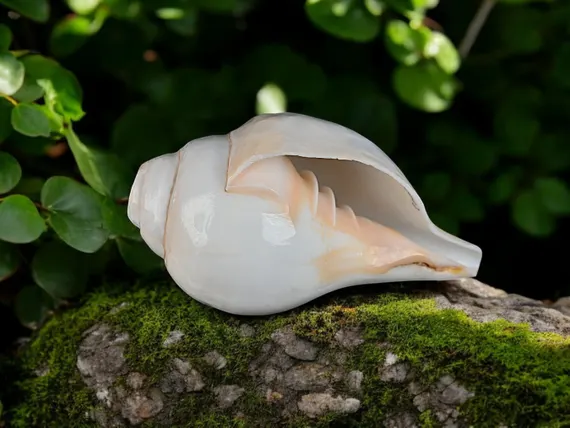INTRODUCTION:
The Shankh (conch shell) is a sacred and important symbol in Indian culture and religion. It is traditionally used in Hindu rituals and is associated with Lord Vishnu, who is often depicted holding a Shankh. The sound produced by blowing the Shankh is believed to purify the environment and ward off evil. It is considered a symbol of auspiciousness, victory, and prosperity. Beyond its religious significance, the Shankh also plays a role in cultural ceremonies and music, making it an enduring and respected emblem across many Indian traditions.
Hindi: शंख (Shankh)
Sanskrit: शङ्ख (Śaṅkha)
Tamil: சங்கு (Sangu)

Telugu: శంఖం (Shankham)
Kannada: ಶಂಖ (Shankha)
Malayalam: ശംഖം (Shankham)
Bengali: শঙ্খ (Shôngkhô)
Marathi: शंख (Shankh)
Gujarati: શંખ (Shankh)
Oriya (Odia): ସଂଖ (Sankha)
Punjabi: ਸ਼ੰਖ (Shankh)
Urdu: شنگھ (Shankh) or صدف سمندر
HEALTH BENEFITS:
Strengthens lungs:
The practice requires controlled, deep breathing, which engages the diaphragm, chest, and neck muscles.
Improves oxygen flow:
It increases lung capacity and promotes better breathing patterns, boosting oxygen flow in the body.
Aids respiratory issues:
It can be particularly beneficial for individuals with asthma or weak respiratory function. A 2025 study found that shankh blowing improved sleep and alertness in patients with obstructive sleep apnea (OSA).
Reduces stress and anxiety:
The resonant sound has a calming, meditative effect on the mind, helping to alleviate stress.
Boosts concentration:
The need for focused, controlled breathing enhances concentration and mental clarity.
Promotes relaxation:
The rhythmic breathing and vibrations have a calming effect on the nervous system.
Balances hormones:
Some practitioners believe it stimulates the thyroid gland, which improves metabolism and hormonal balance.
Strengthens muscles:
It provides an exercise for the urinary tract, bladder, and lower abdomen.
Aids in stammering:
Regular blowing of the shankh may help rectify a stammer.
Digestive health:
It is used for indigestion, abdominal pain, acid reflux, heartburn, and irritable bowel syndrome.
Calcium deficiency:
It provides a readily absorbable form of calcium for growing children, adolescents, and post-menopausal women.
Skin health:
It can improve skin complexion and help treat acne and rashes when applied as water stored in the shell.
SIDE EFFECTS:
Kidney stress:
Taking very high doses over a long period can put stress on the kidneys.
Metallic taste:
Some users may experience a metallic taste in their mouth.
Dosha imbalance:
Excessive or prolonged use may lead to a dosha imbalance in the body, such as increased “heating,” dryness, or a buildup of undigested toxins (ama).
Allergic reactions:
Rarely, allergic reactions like a rash, itching, or swelling may occur.
HOW TO USE:

Dosage: Typically, 125 mg to 250 mg (about a small pinch) is taken, but exact dosage can vary depending on individual conditions and practitioner advice.
Administration:
It is usually taken with water or mixed with honey or warm water.
Sometimes advised to take with a little ghee or milk.
Best taken after meals.
Duration: Follow the duration prescribed by your Ayurvedic doctor, often it ranges from a few days to a few weeks.
Important Notes:
Always consult an Ayurvedic practitioner before starting Shankh to get the right dose and instructions tailored for you.
Not recommended for pregnant or lactating women without medical advice.
Ensure you are getting authentic, pure Shankha Bhasma from a trusted source.




